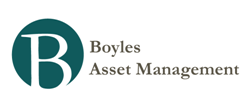Make obstacles spur you to creative new angles in the learning process...
Another excerpt from The Art of Learning:
One thing I have learned as a competitor is that there are clear distinctions between what it takes to be decent, what it takes to be good, what it takes to be great, and what it takes to be among the best. If your goal is to be mediocre, then you have a considerable margin for error. You can get depressed when fired and mope around waiting for someone to call with a new job offer. If you hurt your toe, you can take six weeks watching television and eating potato chips. In line with that mind-set, most people think of injuries as setbacks, something they have to recover from or deal with. From the outside, for fans or spectators, an injured athlete is in purgatory, hovering in an impotent state between competing and sitting on the bench. In my martial arts life, every time I tweak my body, well-intended people like my mother suggest I take a few weeks off training. What they don’t realize is that if I were to stop training whenever something hurt, I would spend my whole year on the couch. Almost without exception, I am back on the mats the next day, figuring out how to use my new situation to heighten elements of my game. If I want to be the best, I have to take risks others would avoid, always optimizing the learning potential of the moment and turning adversity to my advantage. That said, there are times when the body needs to heal, but those are ripe opportunities to deepen the mental, technical, internal side of my game.
When aiming for the top, your path requires an engaged, searching mind. You have to make obstacles spur you to creative new angles in the learning process. Let setbacks deepen your resolve. You should always come off an injury or a loss better than when you went down. Another angle on this issue is the unfortunate correlation for some between consistency and monotony. It is all too easy to get caught up in the routines of our lives and to lose creativity in the learning process. Even people who are completely devoted to cultivating a certain discipline often fall into a mental rut, a disengaged lifestyle that implies excellence can be obtained by going through the motions. We lose presence. Then an injury or some other kind of setback throws a wrench into the gears. We are forced to get imaginative.
Ultimately we should learn how to use the lessons from this type of experience without needing to get injured: a basketball player should play lefty for a few months, to even out his game. A soccer player who favors his right leg should not take a right-footed shot for an extended period of time. If dirty opponents inspire a great competitor to raise his game, he should learn to raise his game without relying on the ugly ruses of his opponents (see Making Sandals, in Part III). Once we learn how to use adversity to our advantage, we can manufacture the helpful growth opportunity without actual danger or injury. I call this tool the internal solution—we can notice external events that trigger helpful growth or performance opportunities, and then internalize the effects of those events without their actually happening. In this way, adversity becomes a tremendous source of creative inspiration.
- Regaining And Clarity Of Mind After Making A Mistake...
From Josh Waitzkin in The Art of Learning: One idea I taught was the importance of regaining presence and clarity of mind after making a serious error. This is a hard lesson for all competitors and performers. The first mistake rarely proves...
- The Delicate Balance Of Process Vs. Goal...
From Josh Waitzkin in The Art of Learning:Chess was a constant challenge. My whole career, my father and I searched out opponents who were a little stronger than me, so even as I dominated the scholastic circuit, losing was part of my regular...
- Learning And Fundamentals...
From Josh Waitzkin in The Art of Learning, and applicable to investing and just about everything else as well:As I struggled for a more precise grasp of my own learning process, I was forced to retrace my steps and remember what had been internalized...
- Charlie Munger On Wisdom Acquisition And Continuous Learning...
Via my typed notes from his 2007 USC Commencement Speech: Wisdom acquisition is a moral duty. It’s not something you do just to advance in life. As a corollary to that proposition which is very important, it means that you are hooked for lifetime...
- Ray Dalio Interview With The Academy Of Achievement (october 2012)
A big thanks to Remmelt for passing this along. [Update: And another big thanks to Jean-Pierre for passing the iTunes link to this along, HERE.] Link to: Ray Dalio Interview ………. Excerpt:You've spoken about individuals who shape the world we...

